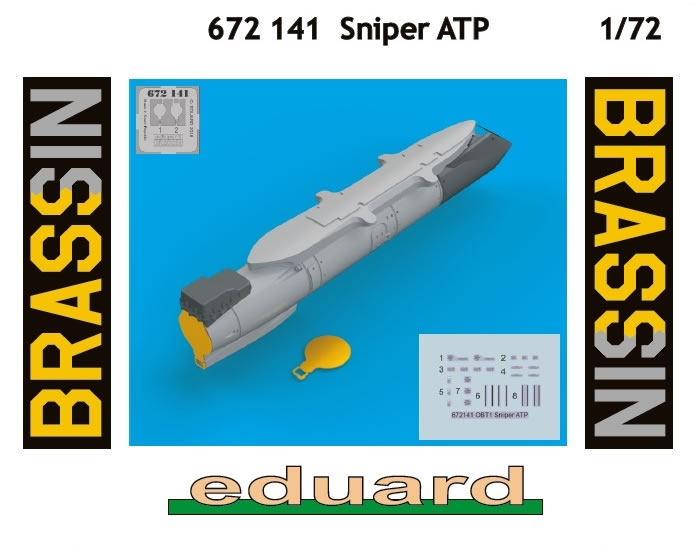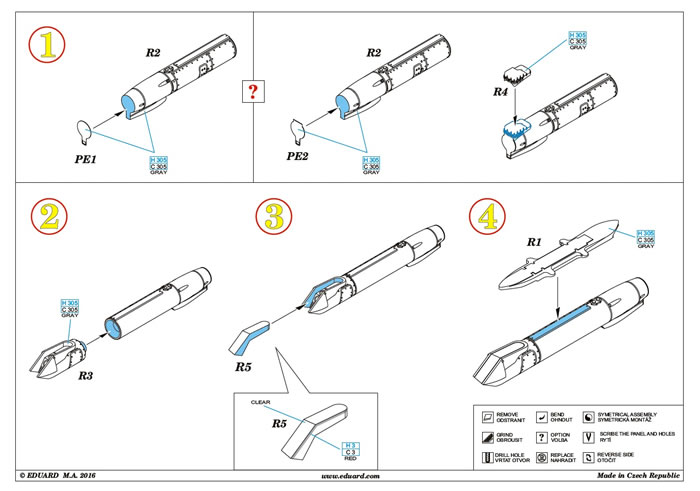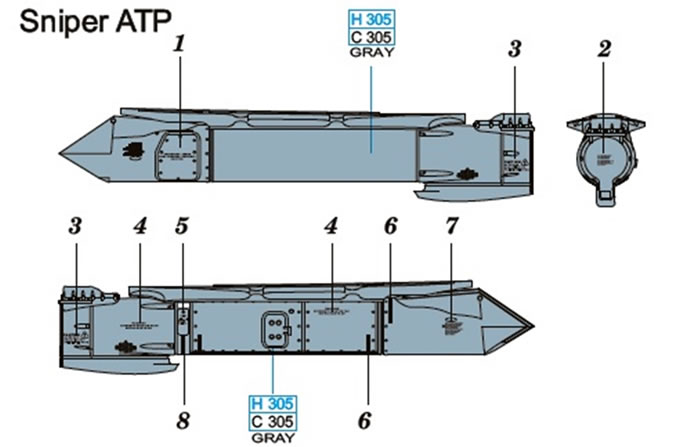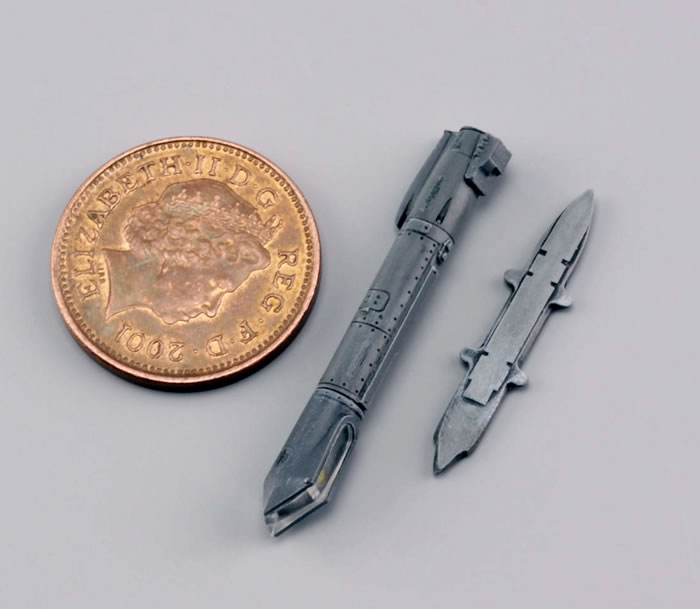Sniper ATP

Eduard BRASSIN, 1/72 scale
S u m m a r y : |
Catalogue Number: |
Eduard BRASSIN Item No. 672 141 – Sniper ATP |
Scale: |
1/72 |
Contents & Media |
Four coloured and one clear resin parts, one PE fret with two pieces, and a decal sheet. |
Price: |
Available on-line from these stockists:
Click for currency conversion. |
Review Type: |
First Look. |
Advantages: |
Superb quality. |
Disadvantages: |
None noted. |
Conclusions: |
Eduard’s Sniper ATP is very nicely rendered. It offers an excellent detail refinement opportunity compared to injection moulded items (when supplied) for a wide range of subjects. I definitely recommended it. |
Reviewed by Mark Davies

Eduard Brassin’s 1/72 scale Sniper ATP is available online from Squadron.com
The Sniper is a single, lightweight targeting pod with much lower aerodynamic drag than the systems it replaces. Its image processing allows aircrews to detect, identify and engage tactical-size targets outside the range of most enemy air defences, giving it a crucial role in the destruction of enemy air defence missions. It also supports urban engagements beyond jet noise range for counter-insurgency operations. It offers a 3-5X increase in detection range over the older LANTIRN system, and is currently flying on U.S. Air Force and multinational F-16, F-15, B-1B, CF-18, Harrier, A-10, B-52 and Tornado aircraft.
The pod incorporates a high definition mid-wave FLIR, dual-mode laser, visible-light HDTV, laser spot tracker, laser marker, video data link, and a digital data recorder. Advanced sensors and image processing incorporating image stabilization enable targets to be identified at ranges which minimize exposure to defensive enemy systems. The dual-mode laser offers an eye-safe mode for urban combat and training operations along with a laser-guided bomb designation laser.
The pod's FLIR allows observation and tracking through smoke and clouds, and in low light / no light conditions. The CCD camera supports the same operations in visible light for most daylight conditions.
For target coordination with ground and air forces, a laser spot tracker, a laser marker, and an HDTV quality video down-link to ground-based controllers supports rapid target detection and identification. The Sniper can also provide high-resolution imagery for non-traditional Intelligence, surveillance and reconnaissance (NTISR) missions without taking up the centreline station on small fighter aircraft, and can maintain surveillance even when the aircraft manoeuvres. As a result, a second, dedicated fighter aircraft isn't needed to provide protection to a dedicated ISR aircraft, which many small nations cannot afford.
Source: Wikepedia
The pod comes attractively packaged in a blister pack with sponge cushioning.
Very clearly drawn instructions are included, with colour call-outs cross-referenced to the Gunze Aqueous and Mr Color paint ranges. A PDF copy of the instructions is downloadable from Eduard’s website.

The quality of casting is excellent, with easily removed casing blocks, and of course, the PE is perfectly produced too. There are two choices of PE end-cap, with one used in conjunction with a small resin box-like part; but I do not know enough about the Sniper ATP to say what this is, and whether or not it has a bearing on the aircraft it is used with. It would be helpful if Eduard explained why there is a choice.
A small sheet of decals provides the markings.

Painted and decaled, this Sniper ATP should be an excellent addition to any suitable model; it is sure to be a vast improvement over any injected kit item, although many kits lack this item anyway.

Eduard offers a very similar 1/48 scale Sniper ATP (#648252), and another specifically for the Harrier GR.9 (#648273); both cost US$9.95.
Eduard’s Sniper ATP is very nicely rendered. It offers an excellent detail refinement opportunity compared to injection moulded items (when supplied) for a wide range of subjects. I definitely recommended it.
Thanks to Eduard for the samples and images.
Review Text & Images Copyright © 2017 by Mark Davies
Page Created 25 April, 2017
Last updated
25 April, 2017
Back to HyperScale Main Page
Back to Reviews Page

|
